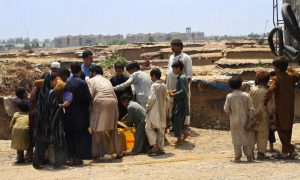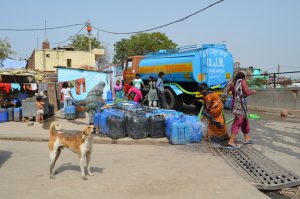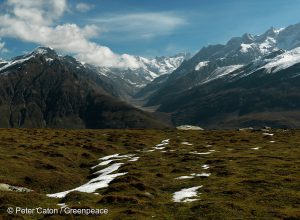As the only South American country with no government ministry dedicated to the environment, it should come as little surprise that Argentina’s national climate plan, announced in Buenos Aires on Monday, is regarded by observers as distinctly unambitious.
Experts have censured Argentina’s commitment to reduce its greenhouse gas (GHG) emissions a mere 15% by 2030 compared to 2005 levels, although it retains the possibility of a 30% reduction subject to obtaining international financial assistance.
While the government has described its national climate plan (known as an intended nationally determined contribution or INDC in UN parlance) as ambitious according to the country’s capabilities, climate experts and environmental organizations have criticised the INDC for its weakness compared to those of its regional counterparts.
Latin America’s largest emitter, Brazil, announced on Sunday that it would reduce GHG emissions by at least 37% based on 2005 levels, rising to 43% by 2030.
“Argentina has the obligation and the necessity to keep growing, we’re not going to sacrifice our people to satisfy international organizations,” Argentina’s environment secretary Sergio Lorusso told Diálogo Chino before adding; “climate change is a problem that affects us all but responsibilities are different. We’re going to comply with our promise but we expect developed countries to do the same.”
As one of the 195 signatories to the UN’s Framework Convention on Climate Change (UNFCCC), Argentina presented its contribution in advance of global negotiations at the next conference (COP21) in Paris in December. Bolivia, Ecuador, Paraguay and Venezuela are the only South American countries yet to submit their proposals. The ostensible deadline for submissions is October 1.
Aside from the limited GHG reduction, one of the main criticisms of Argentina’s INDC is that the projects tasked with reducing emissions are already underway, such as improving the rail network and enhancing its role in freight transportation. However, the plan also emphasises long-term measures like improving energy efficiency in homes and industry and cutting the proportion of biodiesel in fuel.
“We are a sovereign country and will decide our own goals. It’s a point of departure, we’ll see if we can improve on it later,” said Fabiano Loguzzo, director of environmental affairs at Argentina’s foreign ministry.
But Argentina’s INDC falls short of expectations, said Carlos Villalonga, a former director of Greenpeace Argentina and the current head of Buenos Aires’ Environmental Protection Agency,.
“The pledge simply summarises what Argentina has already done. Mitigation will heavily depend on the nuclear and hydroelectric projects. We can’t stay at a level lower than the rest of the region. The numbers need to be revised,” said Villalonga.
The government also aims to develop renewable energy, which today accounts for less than 1% of the country’s energy mix. Argentina expects that an increase in the share of renewables in the matrix to between 8% and 12% will allow the country to meet its 15% reductions target by 2030. This share would increase to 20% in the event that Argentina achieves its conditional 30% reduction.
However, the plan contradicts a law recently approved by congress which outlines a 25% renewable energy target by 2025 and with national elections on October 25, clear and coherent calls for action on climate and environment are notably wanting from policymakers.
Lagging behind
Along with Brazil’s welcome climate pledge, Peru and Colombia proposing unconditional 20% reductions by 2030 (both rising to 30% with financial help) and Mexico pledging 25% by the same target year, increasing to 40% with international assistance, Argentina’s INDC is lacking by comparison.
“Argentina is a member of the G20, it aspires to become part of the BRICS group and is the world’s 21st largest emitter of GHGs. The promised 15% reduction is very small in terms of effort and commitment. All those measures that have been proposed should have already been implemented,” said Enrique Maurtua Konstantinidis, a climate change expert at environmental NGO FARN (Foundation for the Environment and Natural Resources in English).
Argentina is only responsible for 0.88% of the world’s GHG emissions according to the recent Third Communication on Climate Change. However, per capita emissions are comparable to those of most European countries, according to World Bank data.
The agriculture sector is responsible for more than half of Argentina’s GHG emissions, which includes those caused by deforestation through expansion of the farming frontier. The second highest-emitting sector is energy, which includes transport and manufacturing industries and accounts for 43% of emissions. The INDC does not include measures that affect agriculture, livestock production or waste but it leaves the door open to include them in the future.
“The targets are achievable. I would rather Argentina commit to something achievable than do nothing. The country has a great history of preserving natural resources but now it has to balance the national budget,” said Carolina Vera, professor of climate at the Research Center for the Sea and Atmosphere (CIMA abbreviated in Spanish) at the University of Buenos Aires.
New government, more of the same
Campaigning for Argentina’s elections has officially begun and arguably the most significant environmental pledge so far has come from Daniel Scioli, the chosen candidate of outgoing president Cristina Kirchner’s Victory Front and the comfortable winner of August’s primaries. Scioli promised to make environment central to state policy under his regime.
But the election will not be won or lost on promises like Scioli’s, says Andrés López, director of Buenos Aires-based sustainable development think-tank CENIT, who calls environment a “non-issue” and adds that it is the principal concern of only a minority of voters.
Inflation, a budget deficit of nearly US$ 2billion and the need to address the relationship with international capital markets, fractious since the 2001 default, are high on the economic agenda. Argentina’s national institute of statistics (INDEC) puts the annual rate of inflation at around 13.3% but independent estimates suggest the real rate could be twice as high.
“The electorate is worried about other things, like strengthening institutions, judicial independence and attracting foreign investment,” says Jimena Blanco, principal Latin America analyst at political consultancy Verisk Maplecroft.
Even the Pope’s impassioned encyclical on climate change has failed to resonate with voters in his native country, Blanco says, adding that there is a big difference in the pontiff’s ability to influence those that call themselves Catholics and those that actually practice the religion. The Church’s influence on politics in Argentina has waned since the 1980s and confrontations with current president Cristina Kirchner have done little to reengage the substantial number of leftist voters.
Daniel Ryan, research director at FARN, says that there is a paradox in Argentines’ attitudes towards environment that is reflected in surveys; “around 70% of Argentines think the environment is an important topic, but it doesn’t feature among their policy priorities when ranked alongside other issues,” Ryan explains. Therefore, he says, environment receives little attention from candidates whose declarations on environment are often unspecific and indistinguishable from each other.
But the story is different around the sites of Argentina’s big extractive projects and, ironically, the energy infrastructure developments responsible for reducing emissions. These have the potential to impact both environmentally and politically, the analysts said.
Government plans to increase the country’s energy capacity by 5% by building two dams in Patagonia with Chinese finance have outraged environmentalists, who claim the projects could threaten the iconic Perito Moreno glacier.
China is playing a major role in the development of Argentina’s energy infrastructure and the two governments signed a series of deals in February this year including on nuclear energy and hydropower. But bilateral cooperation has yielded comparatively little progress on non-hydro renewables so far and experts predict few major changes to the country’s energy matrix under the next administration, despite their promises.
In line with Argentina’s INDC but within a shorter timeframe, Mauricio Macri of the centre-right Propuesta Argentina (PRO) would increase the share of renewables to 10% by the end of his first term (2020), his top environmental advisor told the Buenos Aires Herald. Scioli pledged to make Argentina “a leading country in renewable energy”.
But making Argentina’s energy matrix greener would require a major overhaul of the sector. Oil and natural gas alone are currently responsible for nearly 90% of Argentina’s total primary energy supply. The Latin American regional average is around 66%.
According to Blanco, any investment in expanding non-hydro renewables will be local and likely driven opportunistically by the private sector rather than strategically by the state. Blanco adds that the emphasis on non-renewables is likely to continue given the anticipated shale bonanza from the Vaca Muerta field in Neuquén province – the largest proven shale oil and gas reserves in the world outside the US.






